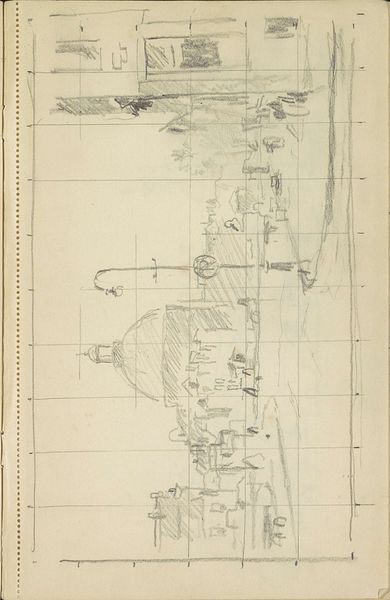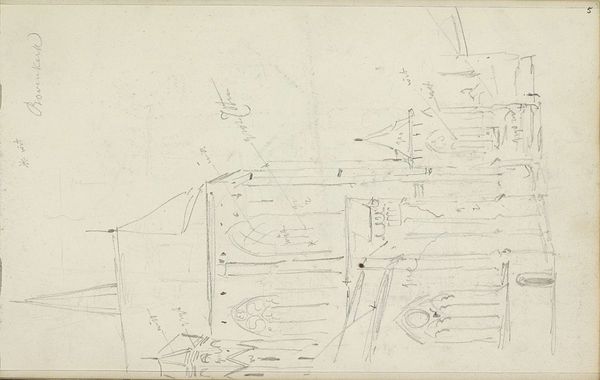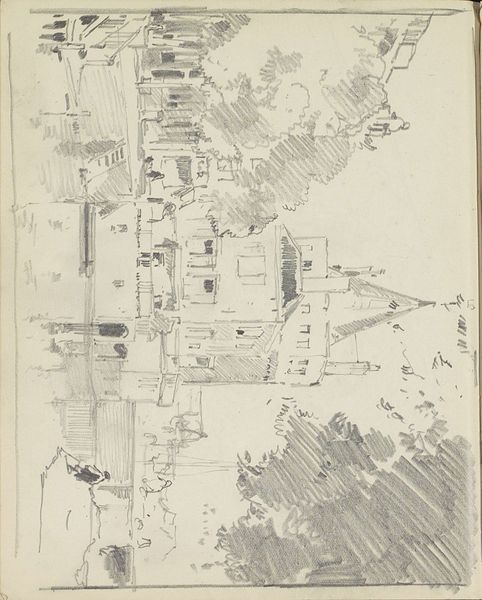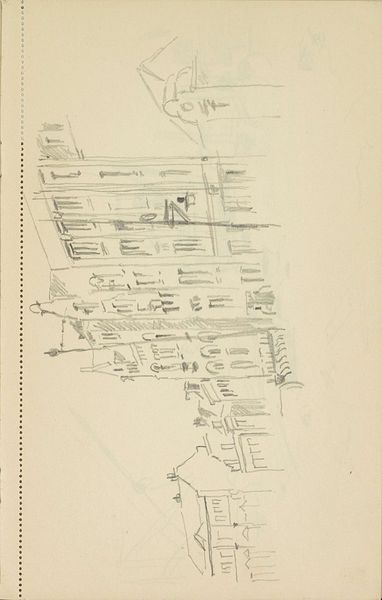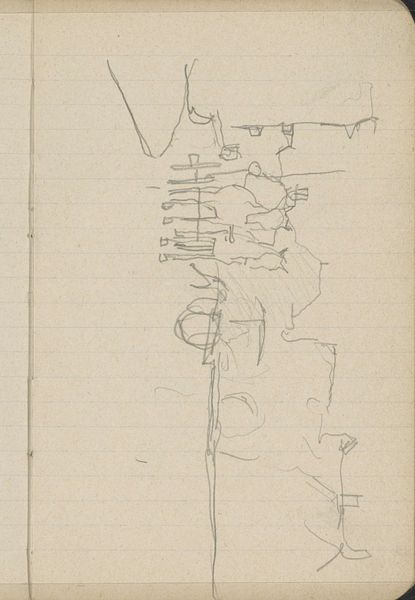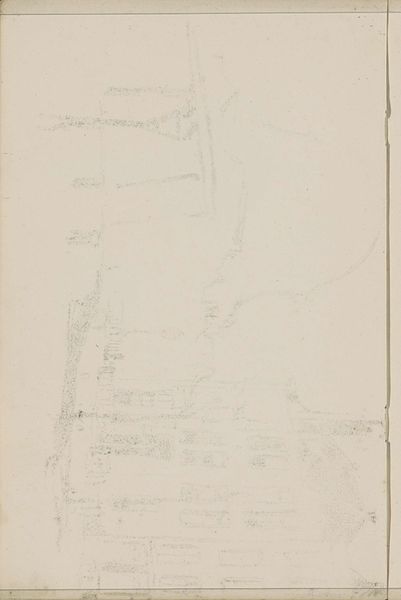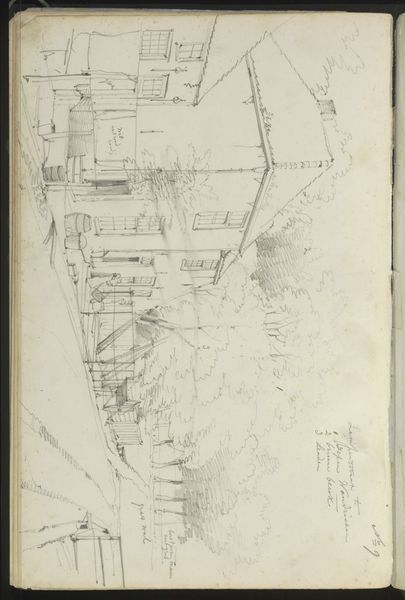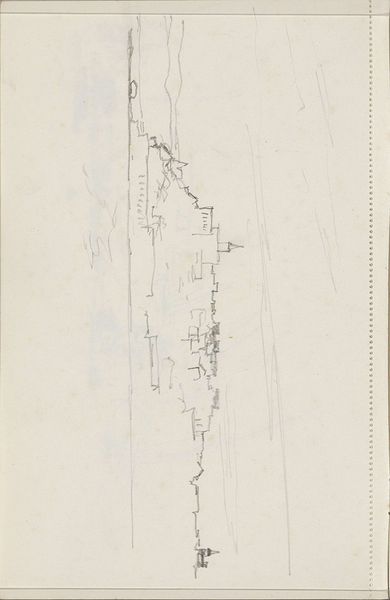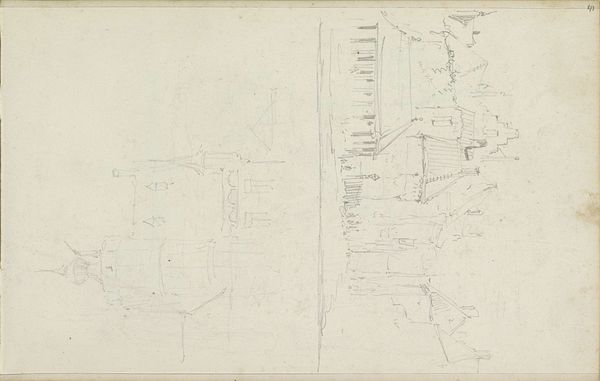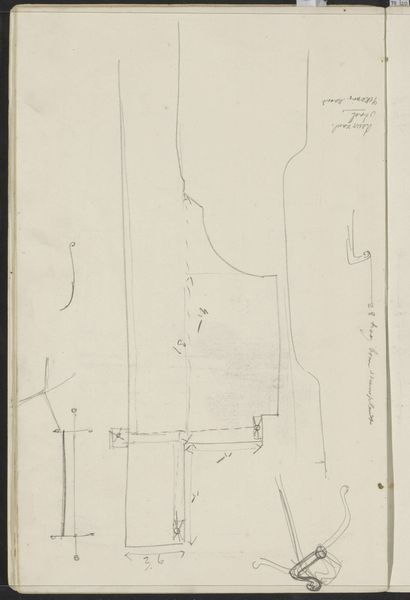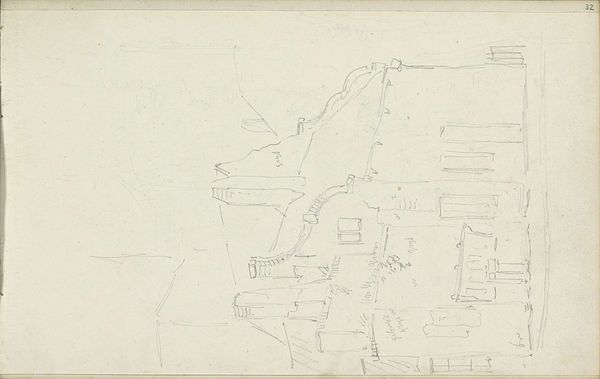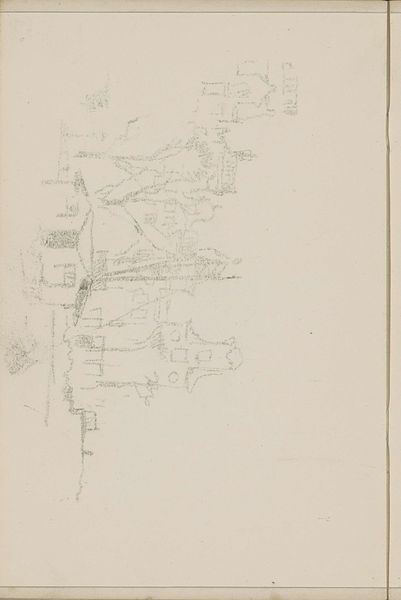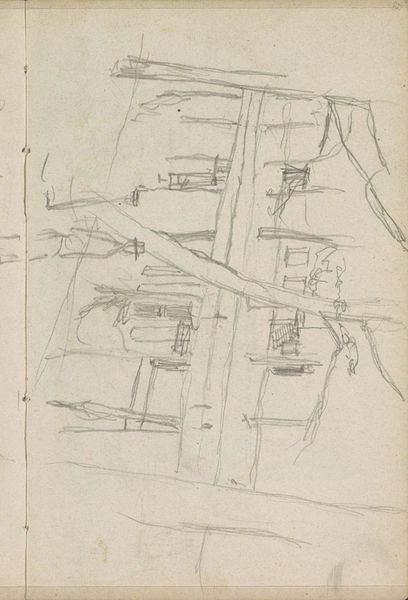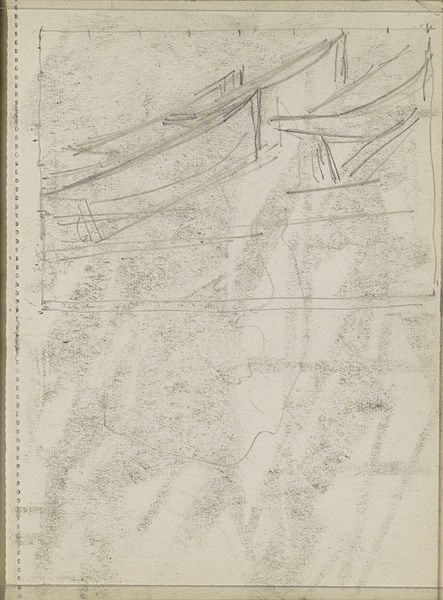
drawing, pencil
#
architectural sketch
#
drawing
#
quirky sketch
#
sketch book
#
incomplete sketchy
#
landscape
#
personal sketchbook
#
idea generation sketch
#
sketchwork
#
pencil
#
sketchbook drawing
#
cityscape
#
storyboard and sketchbook work
#
realism
#
initial sketch
Copyright: Rijks Museum: Open Domain
Editor: Here we have Cornelis Vreedenburgh's "Gezicht op een kade in een stad," a pencil drawing from sometime between 1890 and 1946. It’s housed here at the Rijksmuseum. The sketch is light and airy, almost ephemeral. What strikes me, though, is the visible grid; it suggests the artist was being very intentional. What do you make of it? Curator: The presence of the grid is telling, isn't it? It pulls us back to the institutional structures that often governed artistic production. This wasn't a 'pure' outpouring of feeling, but a carefully considered, mapped-out view. I wonder what sort of larger project it was purposed for? We have to ask ourselves what this kind of precision, in a preliminary sketch, suggests about the art world's expectations or the artist’s own working methods. What does it mean to create an idea of a landscape that is controlled from its conception? Editor: That's interesting! It's like the artist is surveying the landscape with the gridlines acting almost like theodolite readings. I’d always thought of sketches as very free. Curator: Well, that freedom is, itself, a historical construct, a romantic idea of artistic genius we've inherited. What’s fascinating here is the contrast—the raw, almost frantic pencil strokes within this very rigid framework. Perhaps the artist felt somewhat constrained by the art world's increasing academicization at the turn of the century. Editor: So, this tension speaks to the historical moment? Curator: Absolutely! The sketch becomes a negotiation between individual expression and the institutional expectations of the time. Even these seemingly insignificant gridlines are important data in art historical analysis. What does the scale of the sketchbook mean, and does it invite or resist mobility, collectibility, and so on? Editor: Wow, I’ll never look at a sketch the same way. I always considered them as practice pieces! Curator: And sometimes they are, but practice also has a purpose in shaping technique and perspective as artworks are formed through various historical means. Think about how much it means to see this sketch now, hanging in the Rijksmuseum and re-presented as culturally important and preserved history.
Comments
No comments
Be the first to comment and join the conversation on the ultimate creative platform.
